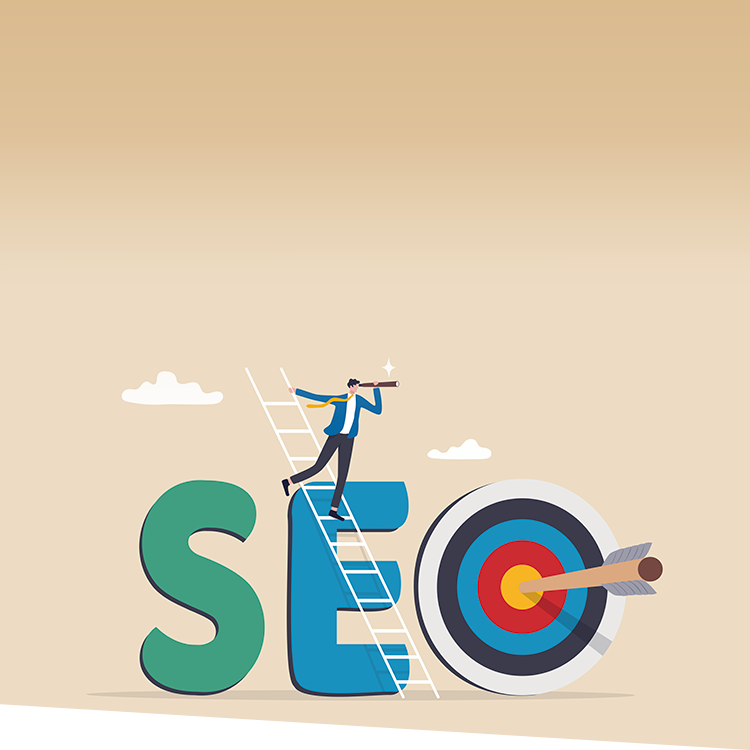Purposeful marketing can help lead to full enrollment and even waitpools. But setting your budget and allocating expenses requires time, research, and, of course, careful attention to the efficacy of your various campaigns.
ISM’s consulting experience suggests schools produce the best results when they allocate the majority of their total recruitment and re-recruitment budget toward digital marketing. But how do you begin? There are endless options: blogs, social media, sponsored ads, and virtual events, to name a few.
A good place to start is by understanding the difference between search engine optimization (SEO) and pay-per-click (PPC) content. Both options are a form of digital marketing that draws on keywords with the hope of increasing your visibility in search engines. Here are the pros and cons of each method.
Search Engine Optimization
SEO is the process of improving the quality and quantity of traffic to a website or a web page from search engines. SEO targets unpaid traffic rather than direct traffic or paid traffic.
By employing SEO strategies, schools can achieve higher search engine rankings and visibility, attract more prospective families, and ultimately improve their chances of reaching and engaging their target audiences.
Strategies to improve SEO include:
- publishing relevant content that establishes you as an authority;
- updating your content regularly;
- having a website filled with links to internal pages and external resources that add value; and
- using descriptive language to explain images and other content.
Pros
- Cost effective: If you are fortunate enough to have talent in-house, you can produce SEO content at no extra cost. SEO service pricing can have a wide range, so if you’re looking into using an agency, make sure to get multiple quotes. Most schools adopt a hybrid approach, doing some of the work internally and outsourcing the more complex and time-consuming tasks.
- Audience reach: SEO content targets every phase of the marketing funnel: awareness, consideration, conversion, and loyalty. This means your content can reach a broader audience—including new inquiries to alums and everything in-between. It’s progressive, too: With time and consistency, your content will appear more frequently on the first page of search engine results.
- Return on investment: In most cases, SEO content typically yields a high return on investment. SEO content receives on average about 20 times more clicks than PPC (paid) content. ROI is derived from the amount of content at the top of search engines.
Cons
So, what’s the downside of SEO content? Spending your money on SEO content will not produce immediate results. For example, if you want to drive more targeted traffic to mission-appropriate families, it can take at least six to 12 months to start seeing meaningful engagement. So if you are looking to fill some unexpected midyear openings as soon as possible, SEO may not be the best option for you.

Tune in to live webinars every week during the school year to get specific, research-backed insight you can immediately apply at your school.
Pay-Per-Click (PPC)
PPC is an internet advertising model used to drive traffic to websites where an advertiser pays a publisher when the ad is clicked. The PPC model essentially requires paying for keywords. For example, if a business opts for Google search ads, advertisers bid on relevant keywords. When a user's search results include those keywords, the advertiser's ad may appear. The advertiser is charged when a user clicks on their ad, hence the term pay-per-click.
Pros
- Instant results: With PPC, the equation is simple: The more money you spend, the more likely you are to get visitors directed to your site.
- Visibility: Google places PPC ads above and below the organic results so you’re getting front-and-center placement. ISM recommends most schools interested in advertising allot a portion of their budget dedicated to Google ads because of the measurable results it produces.
- Valuable data: The data provided allows you to track keywords and ads that produce the best impressions, most clicks, and highest conversions, empowering you to make data-driven decisions to improve your marketing strategy.
Cons
Easy and straightforward, right? Not so fast. There is a learning curve, and if you run an ad without the proper elements in place, you may end up wasting your money. Compared to SEO, PPC is pay to play—you can show up at the top of Google tomorrow, but you will have to pay to make that happen. In the education industry, the average cost per click is $2.70. This cost can vary based on your location and the amount of other advertisers bidding on the same keywords as you.
For most schools, a combination of SEO and PPC may be best. SEO has a great long term ROI, so the sooner you get started on that, the better. PPC may be pay-to-play, but it can also drive more immediate traffic and results. Regardless of what you choose, understand the pros and cons of each tactic, establish clear goals, evaluate your marketing results often, and if in doubt, reach out to a marketing agency for advice about which strategies are right for you.






